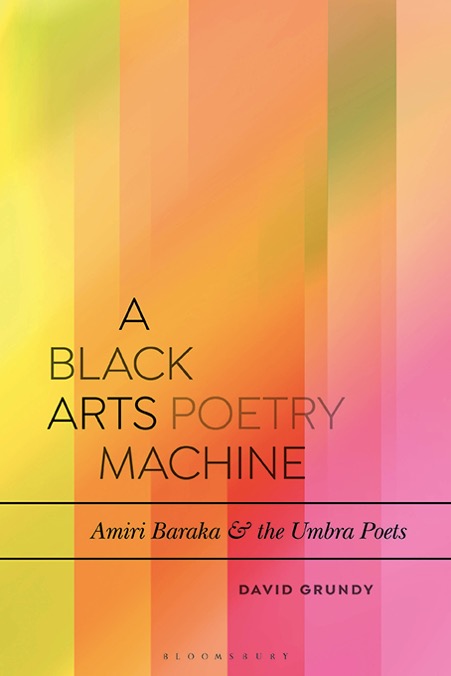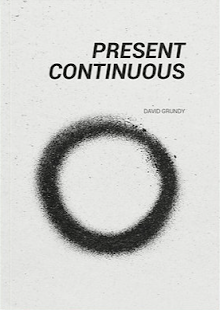
Charles Gayle - tenor saxophone, piano
Ksawery Wójciński - bass
Klaus Kugel - drums
The write-up on the Cafe Oto website suggested – or perhaps this was just my impression on an over-hasty glance that morning – that Charles Gayle might have ‘mellowed’, become more interested into forays into different traditions than the Aylersque intensity for which he’s known; almost an apology in advance, for those who might be disappointed by this direction. Presumably the reference was primarily to his piano playing – which, however, anyone with a more than passing acquaintance with his career will be aware has been present for a while, operating in quite a different area to his saxophone work – but the set as a whole was full of bark and bite, the thickness and grit which gives his playing its, shall we say, ‘purer’, more stripped-down, more difficult dynamics, in comparison, say, to someone like the late David S.Ware, buoyed on and up by Matthew Shipp’s riffs and by a luxuriant ‘godspelized’ balladry; this in large part due to the fact that Gayle prefers working in trio settings, the only piano playing his own, decidedly chunky, resolutely un-flowing.
Gayle’s upper-register playing is like nothing else; or, it’s like plenty else in that post-Ayler repertoire, but the moments when he goes there for thirty seconds at a time, pauses, goes back, pauses, goes back, the sudden release and clamp down and release of a flock of screaming birds, their placement, are his own, decidedly material, for all the controversial, whatever, Christian rhetoric and framing. (Spirit is material, of course, in the conception of any number of African-American musical traditions; is the material working through and on tradition within the physical body of the performer who performs in and as that music’s history, with its back-up and with its challenge and weight.) Listen to that upper register neither as the clichés of yawps of glory of cries of pain by which the whole biographical focus on homelessness glorified as martyr-suffering revelation would force the critical terminology, but as a concentrated area of concern. Technique, whatever. Carved out of and carving a space; thinking, spatially. To be taken up, you take yourself there, force the flight. For any heaven that he wants to reach, Gayle will be climbing up Jacob’s ladder, stepping or slipping on each rung.
Seymour Wright, who was in the audience, sometimes plays sets in which he almost exclusively focuses on this kind of area – I’m thinking in particular of one absolutely ferocious in its intensity and focus, played by his trio with Paul Abbott and Daichi Yoshikawa, lln, in a freezing warehouse in Cambridge back in January. But whereas an improviser such as Wright might take that element from someone like Gayle and move it away from obvious idiomatic references to jazz, with Gayle, it’s part of a vocabulary that comes from a different place, with a different idiomatic tinge. For instance: a moment with notes tugged and wailed as a melody heaves itself out; a foot insistently tapping over walking bass, tone still rough and shouting. There was a similar section in Peter Brötzmann’s performance here earlier in the summer; but whereas Brötzmann’s occasional turn to that kind of frame is perhaps part of a conscious decision to reference various forms of jazz history – certainly in spoken interviews, also partly in the playing – Gayle’s always been more overtly and referentially of various traditions, doesn’t need to ‘turn’ to them. There are bits of late Coltrane in the steeliness of the lower register, though the rhythmic approach is often quite different; with Ayler is shared an emphasis on blocks (rather than sheets) of sound; the rhythmic focus or interplay comes out of the pauses that are left between these blocks, in interaction with the rhythm section, which might lift or drop, sustain or undercut or emphasize them; you get a real sense of this from watching Gayle’s body language, making, for instance, two attempts, two lunges, spitting out into the mouthpiece, mouth pursed forward, until finally the sound blasts forth on the third attack; ducking his knees, bending down and bouncing up as a kind of visual or physical anticipation of the sound whose appearance is in a kind of rhythmic dialogue with that precursor, a different kind of movement. This of course isn’t visible on record, but no doubt it inflects the rhythmic emphasis that can be heard there; somewhere between Gayle catching himself off guard, deliberately, keeping himself on his toes, in both the literal and figurative sense, and a more unconscious state of being in the music – or both at once, an element of technique that wouldn’t necessarily be theorized as ‘technique’ as such, but is a vital part of the music’s physical, material process of making.
So Gayle’s body language is a part of his style in itself, knees bending lower and lower while the top half of his body remains straight; all the more striking for his gaunt frame, perhaps not as stick-thin as Roscoe Mitchell but with a slight frailty that manifests itself when he finally takes a breather, switches instruments, allows the other players to solo. Early on a burred blast is followed by a brief burst of coughing; Gayle later apologizes, he has asthma. He seems almost taken aback by the warmth of applause, willing him on and back, wiping his brow, announcing his co-players and almost embarrassed when they mention him in turn.
As for the piano playing, it’s shot through with Monk, with, say, a characteristic TSM trinkle-tinkle flourish turned into the key-rolling cluster-run of the avante-garde; Gayle favours a left hand motif strongly reminiscent of the opening phrase of Misterioso; elbow or open-palm slams granite reiteration will alternate with a kind of deliberate awkwardness with chord changes or, at one point, a semi-quotation from Body and Soul, the avant-garde flourishes (or not so much flourishes, there for crushing heft and weight rather than virtuosic note-excess) interrupting the shadings of standard voicings and melodies which are in turn interrupted by a hefty thwack or thump.
The bass player is a virtuoso, no question; his bowing technique in particular is stunning, bow lifted off strings, glancing off them, wisps of sound as if overhead and caught in passing on some wind, Aeolian. The drumming is less impressive, or at least draws less admiring attention to itself; certainly noisy, at times rather distractingly so (particularly during a lengthy second set section in which bass and drums are still locked in a kind of high-energy free jazz mode which gives Gayle’s more balladic piano no room to breathe); but with pleasant colouristic additions from a small set of mini-gongs and bells to the side of the kit and some nice feathery brush playing, glancing off cymbals and surfaces under the impressive first bass solo. These moments occurred in the first set, which overall had more focus (though moments in the second, such as Gayle’s sudden decision to switch instruments and insistent following two-handed thump on the piano keys, or his insistent tenor re-entry on the final tune, were as fine as any of the evening). I didn’t really snap out of the impression of that first set for five minutes, even as the interval music came on over speakers to force people into bar mode and mood, that interlude ritual; perhaps what I’ll remember most of all is Gayle’s first piano excursion, top half of his body this time bent almost double, bending out of or into the piano’s shade, letting out occasional exhaled groans or grunts, slowed to a crawl; that almost ponderous exactness, pedalled emphasis, reminiscent not only of Monk but of Mal Waldron – or maybe it’s just that I’ve been listening to Waldron on and off quite a bit recently – though the effect is far less that of the inexorable build-up or following of the contours of a tune in which Waldron specializes, more of a kind of deliberate non-smoothness, a succession of grinding, halting blocks, squeezed out. I didn’t even know if I liked it at the time, which is the resistance that tells ‘us’ or me or whoever that something is being done that is real and challenging work; work that is not easy, not easily taking off into wished energy music catharsis, not the vital scintillation and buoyancy of (in particular) the first track on Touchin’ on Trane, its fleet dance, but something more characteristic, perhaps, of ‘late work’. Or maybe by bringing up the spectre of late work I’m doing that very biographical inflection I criticized earlier, basing this on the hesitancy, the physical vulnerability of Gayle’s stage persona, itself not seeming a ‘persona’ as such as the real reactions to live events and the particular community of music venues of someone who’s not worked on a ‘persona’, or who, when he does, makes the kind of mis-step that brings down almost universal approbation or confusion or scorn, as the mute ‘Streets the Clown’. Still, that idea of ‘late work’; late at night, late in life, whatever; slower, more stumbling, not so much honed and perfected as the achieved end of a process; perhaps, even, more or differently compelling because less sure of itself and thus harder won; dragging on, wrenching; forced out of and into the moment with attention, with the possibility of failure, present and real.




No comments:
Post a Comment